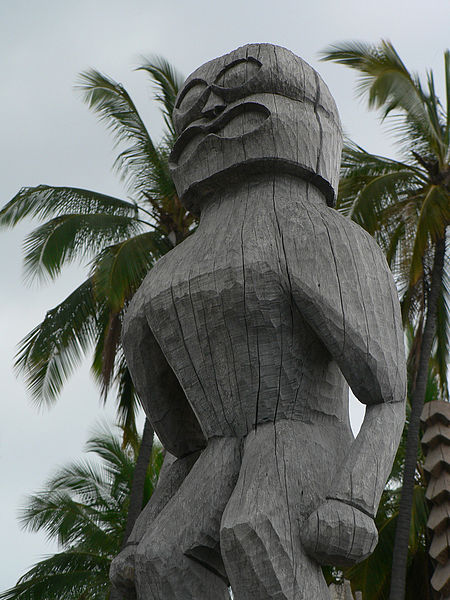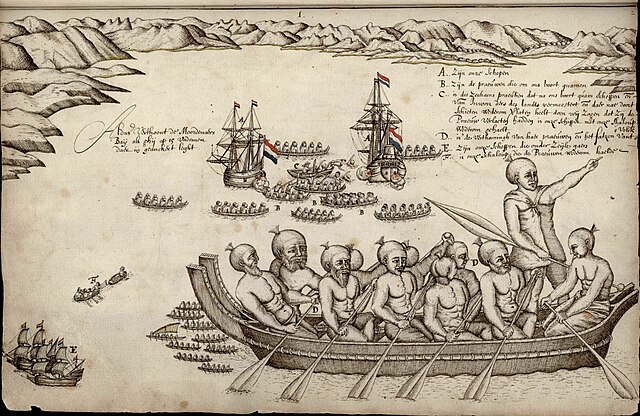In Māori mythology, Tiki is the first man created by either Tūmatauenga or Tāne. He found the first woman, Marikoriko, in a pond; she seduced him and he became the father of Hine-kau-ataata. By extension, a tiki is a large or small wooden, pounamu or other stone carving in humanoid form, notably worn on the neck as a hei-tiki, although this is a somewhat archaic usage in the Māori language. Hei-tiki are often considered taonga, especially if they are older and have been passed down throughout multiple generations. Carvings similar to ngā tiki and coming to represent deified ancestors are found in most Polynesian cultures. They often serve to mark the boundaries of sacred or significant sites. The word has cognates in other Polynesian languages, such as tiʻi in Tahitian and kiʻi in Hawaiian. In the Western world, Tiki culture, a movement inspired by various Pacific cultures, has become popular in the 20th and 21st centuries.

A Māori man retouches the painted tattoo on a carved wooden tiki at Whakarewarewa Model Village, New Zealand, 1905
Hawaiian kiʻi at Puʻuhonua o Hōnaunau National Historical Park
Tiki statuette from the Marquesas
Tiki statue shop, Hawaii, c. 1959
Māori mythology and Māori traditions are two major categories into which the remote oral history of New Zealand's Māori may be divided. Māori myths concern tales of supernatural events relating to the origins of what was the observable world for the pre-European Māori, often involving gods and demigods. Māori tradition concerns more folkloric legends often involving historical or semi-historical forebears. Both categories merge in whakapapa to explain the overall origin of the Māori and their connections to the world which they lived in.
Six major departmental atua represented by wooden godsticks: left to right, Tūmatauenga, Tāwhirimātea, Tāne Mahuta, Tangaroa, Rongo-mā-Tāne, and Haumia-tiketike.
Detail from a ridgepole (tāhūhū) in a Ngāti Awa wharenui. Believed to represent one of two ancestors: Tūwharetoa or Kahungunu.
First European impression of (Ngāti Tūmatakōkiri) Māori, at Murderers' Bay, 1642.







